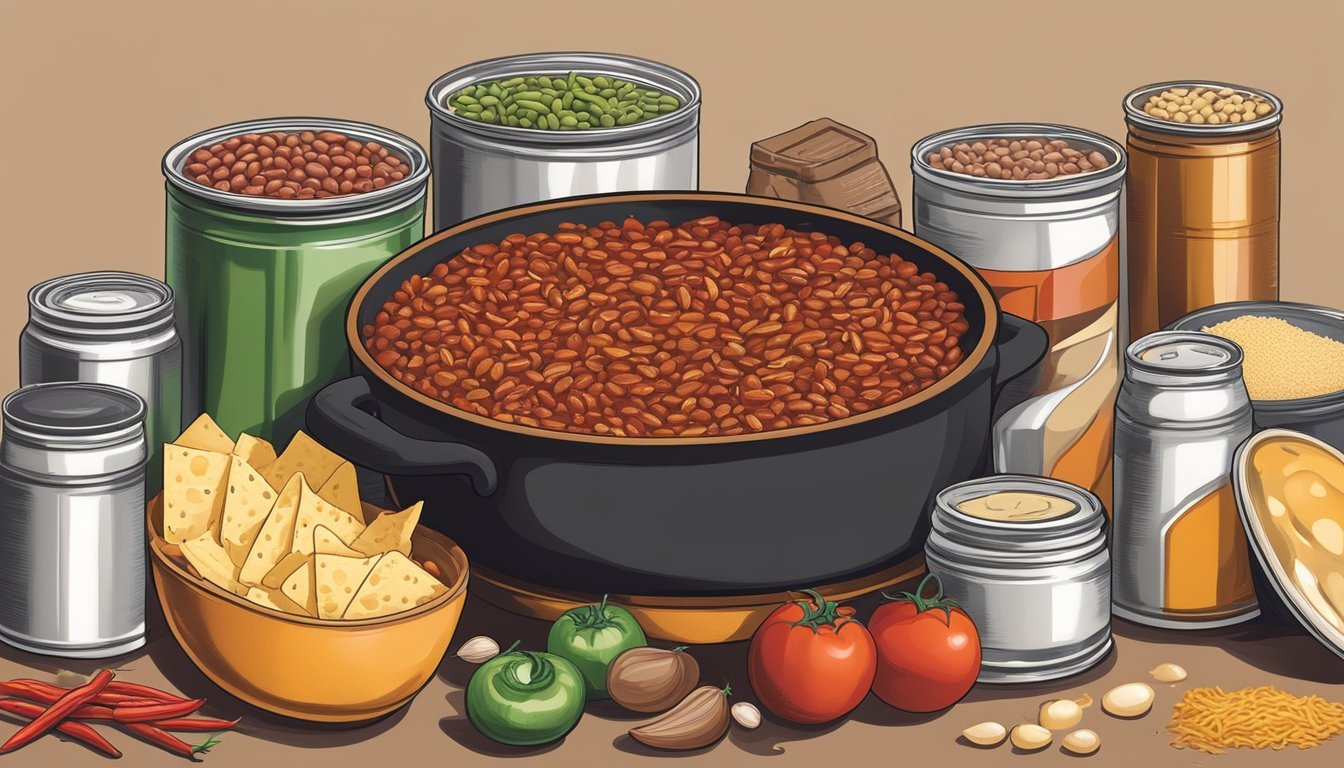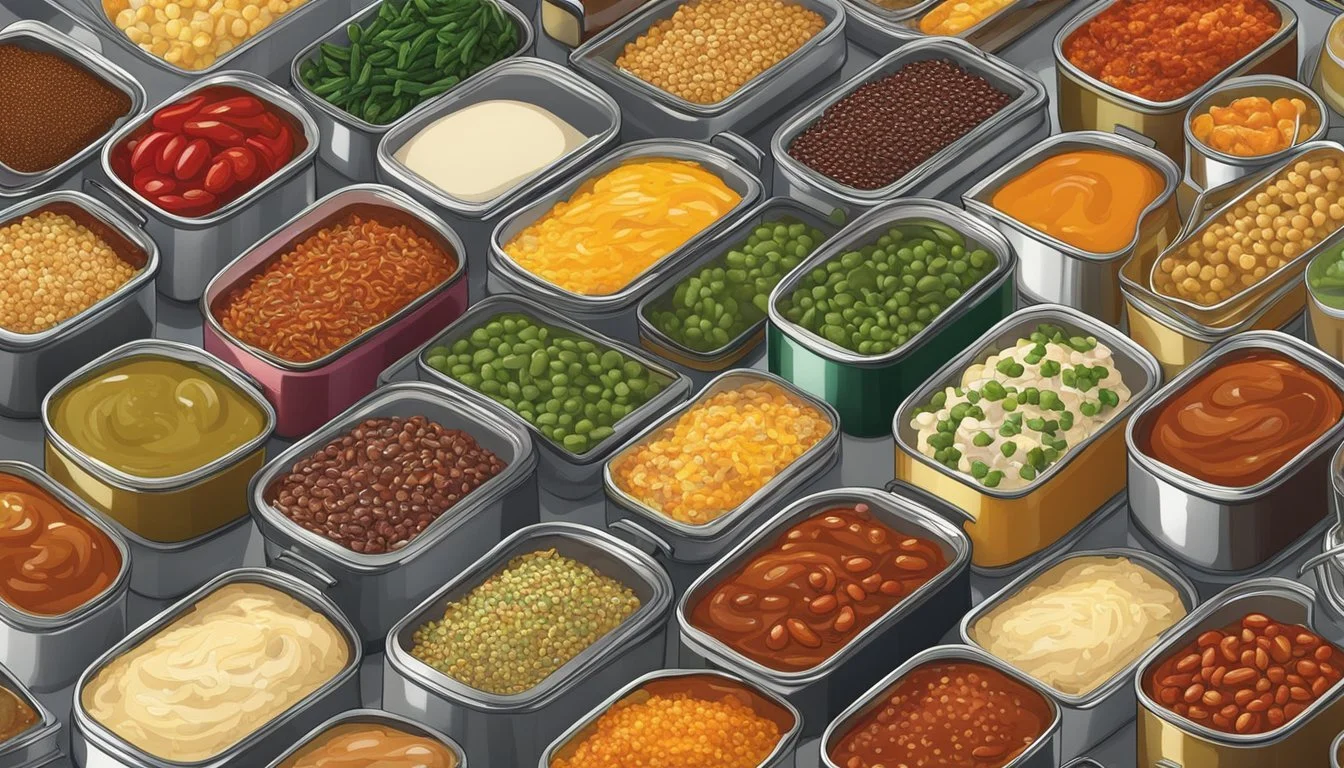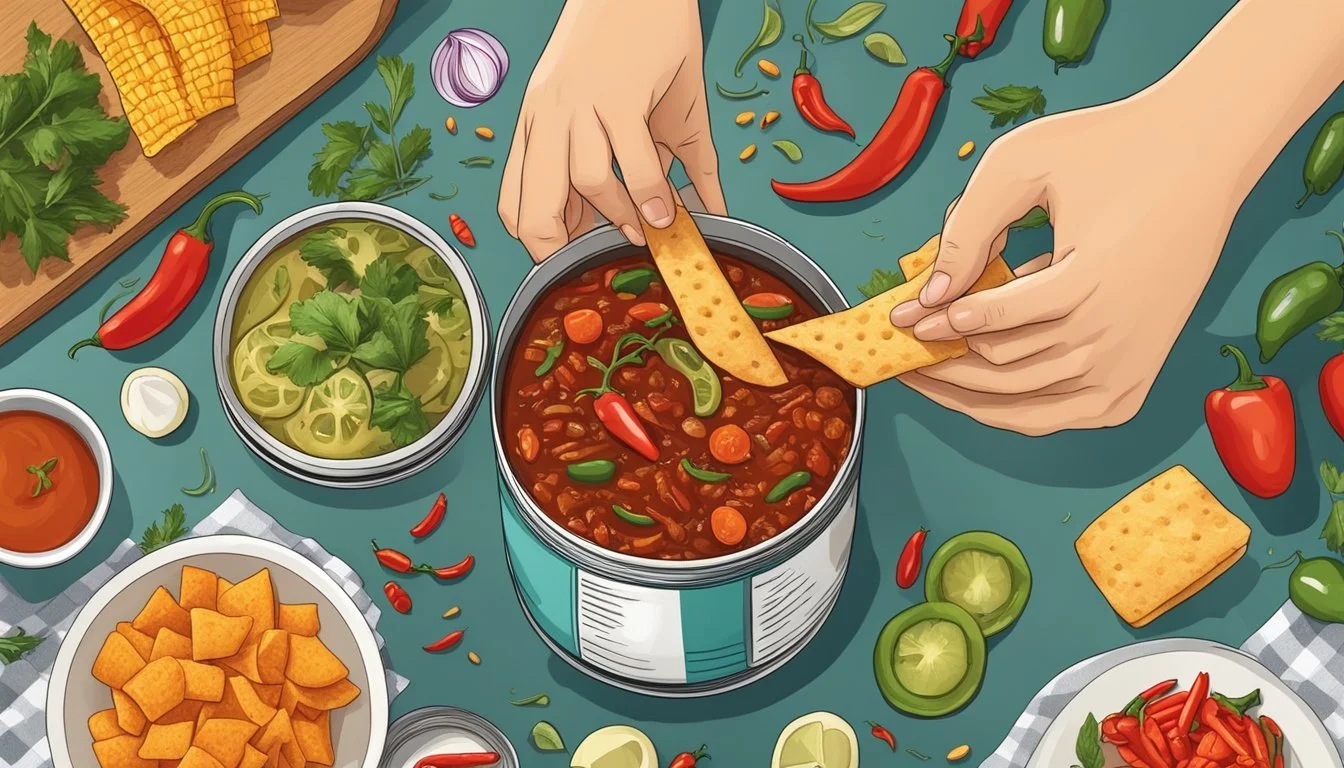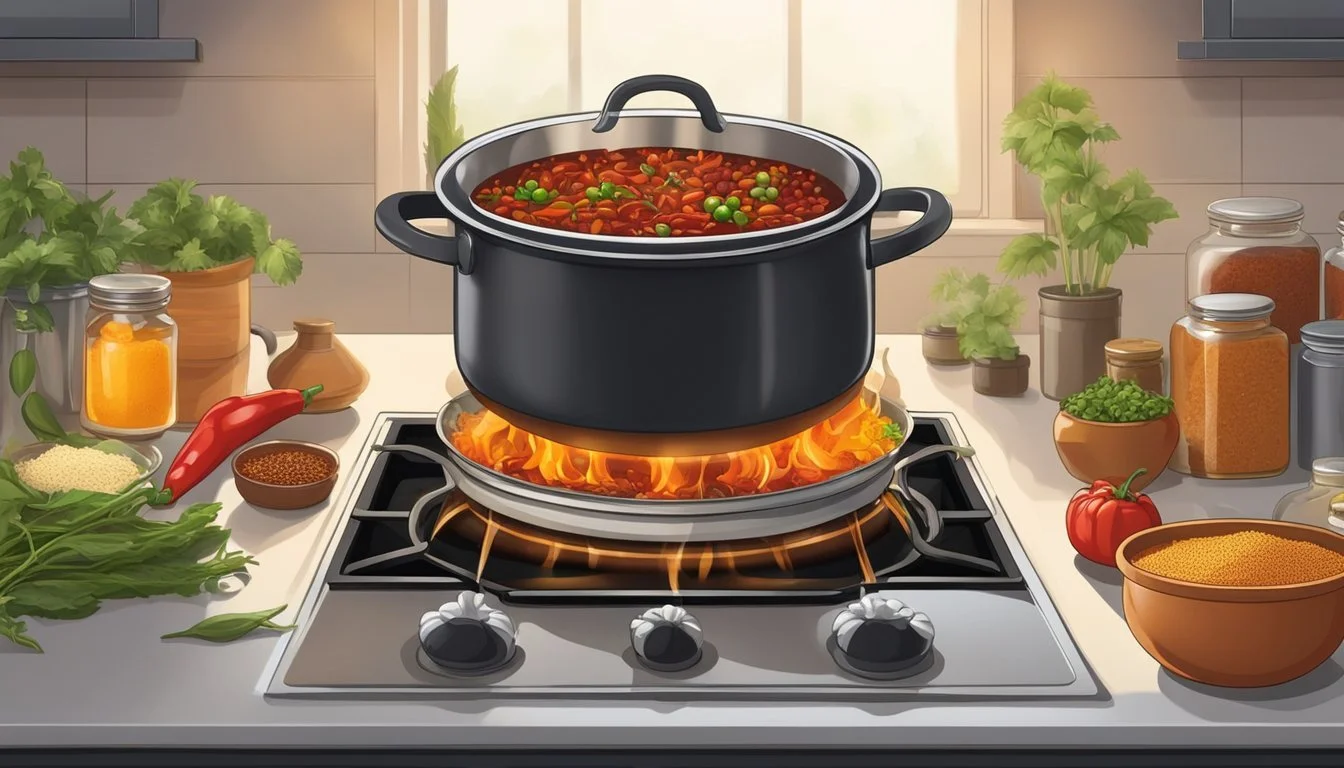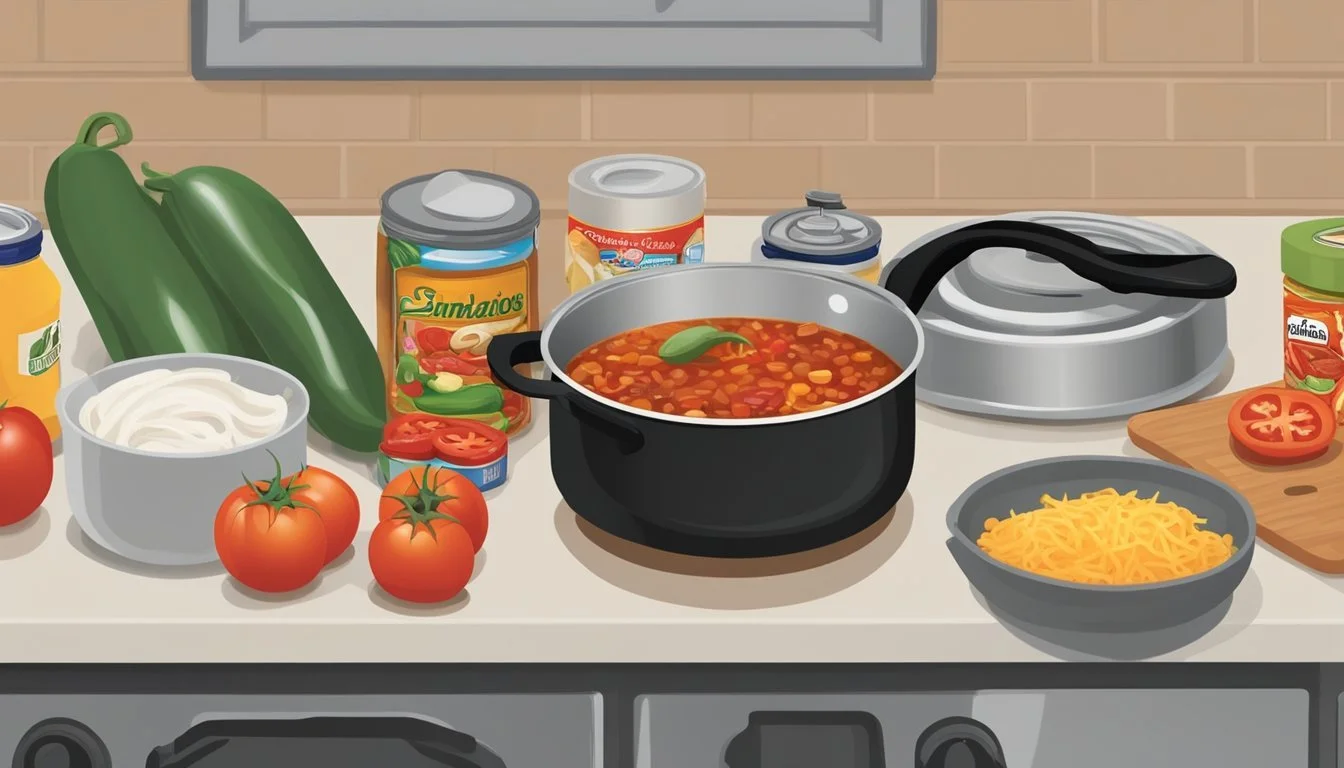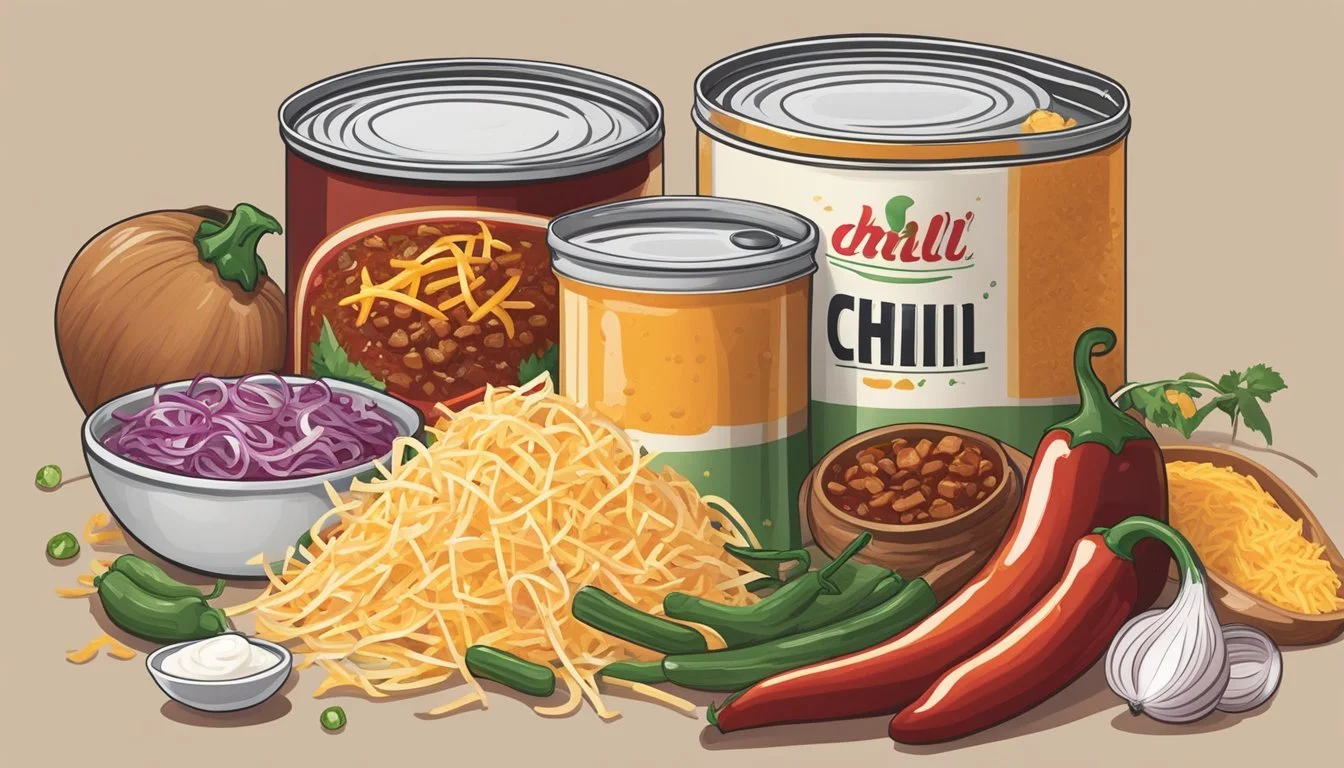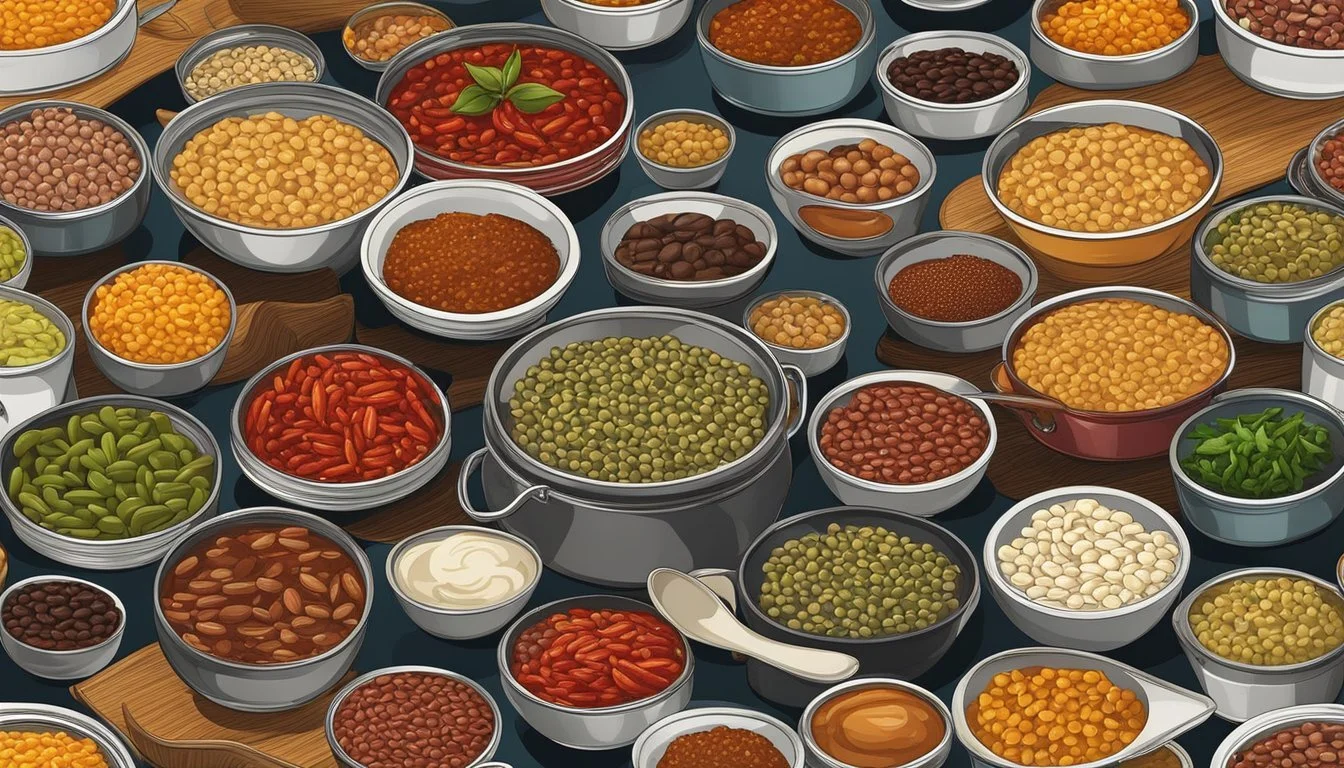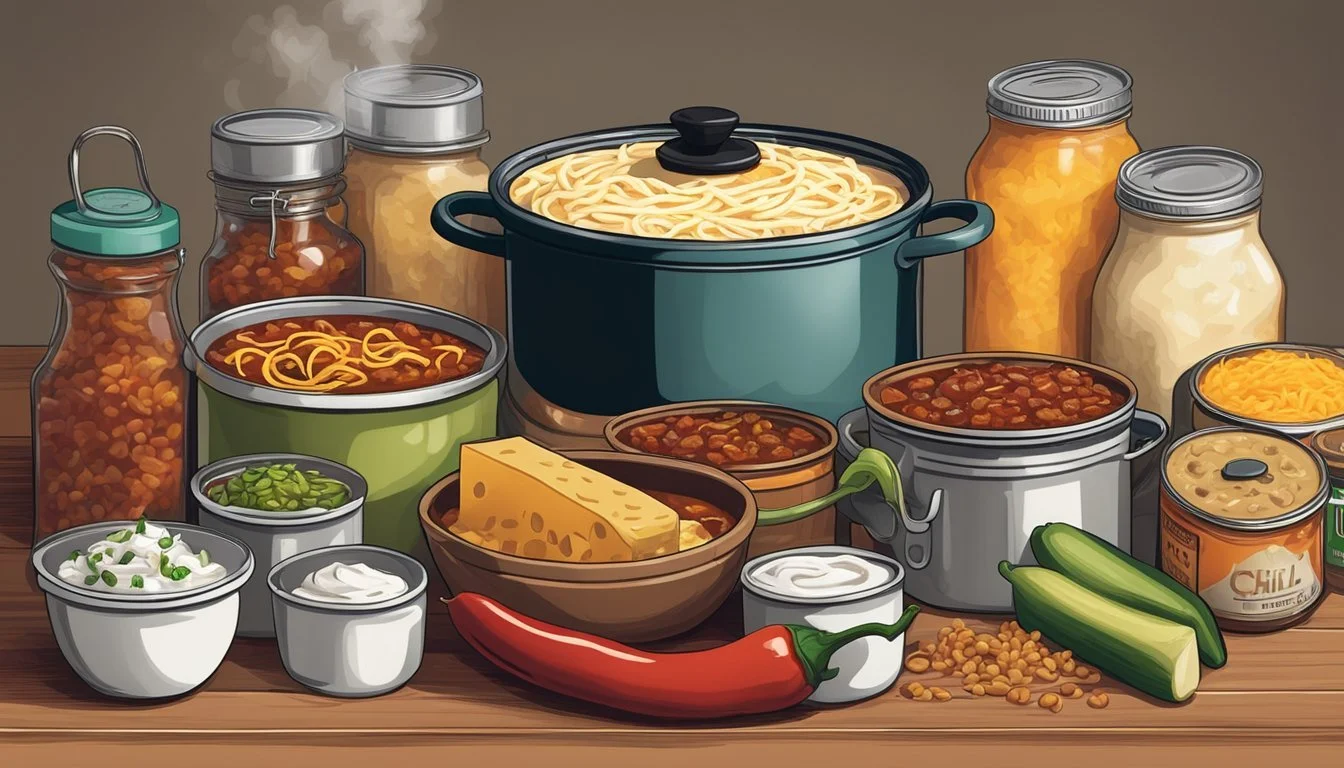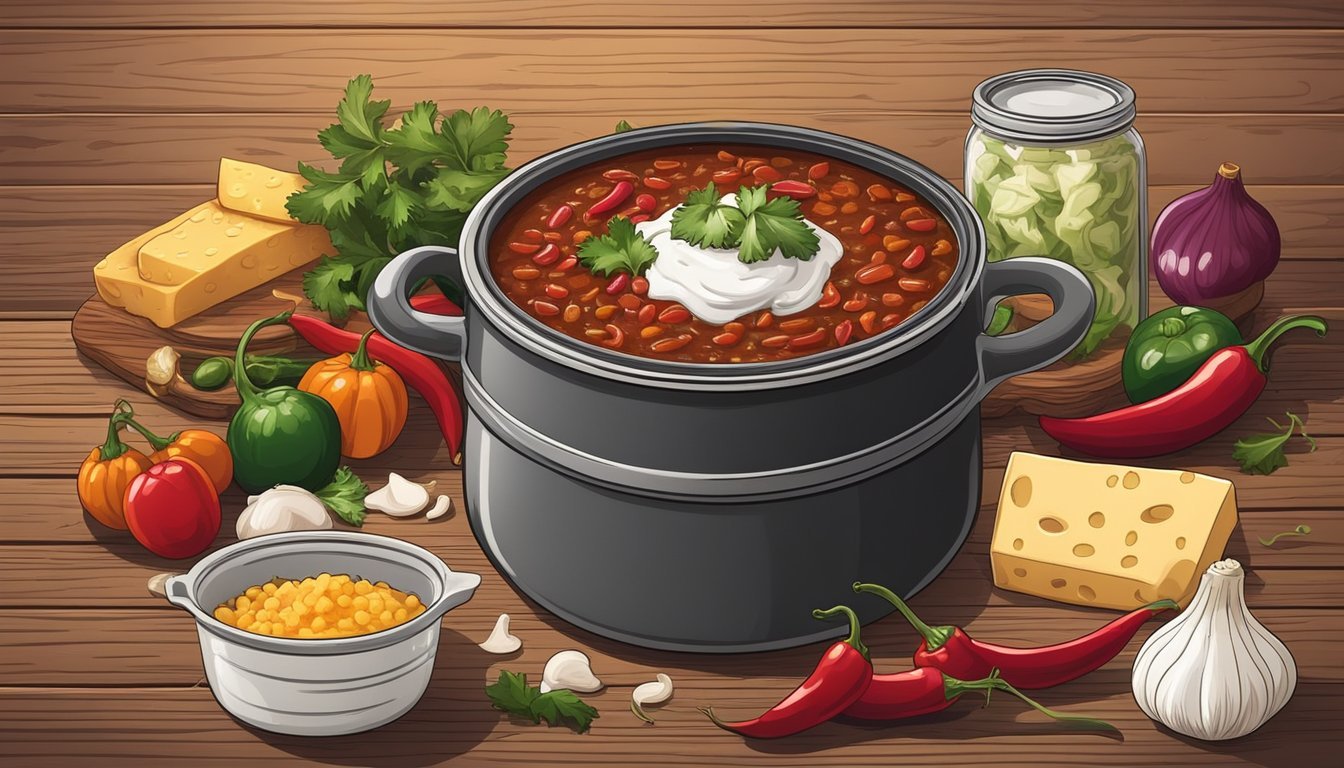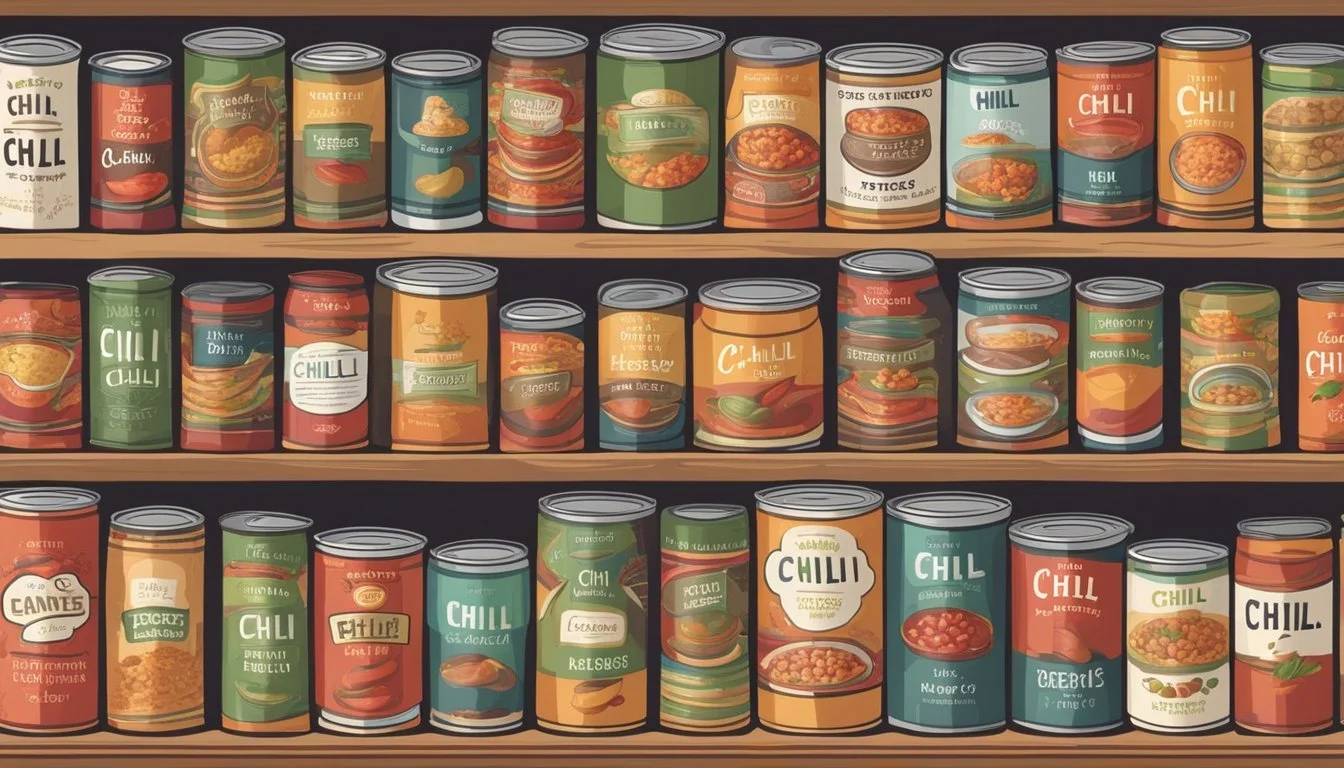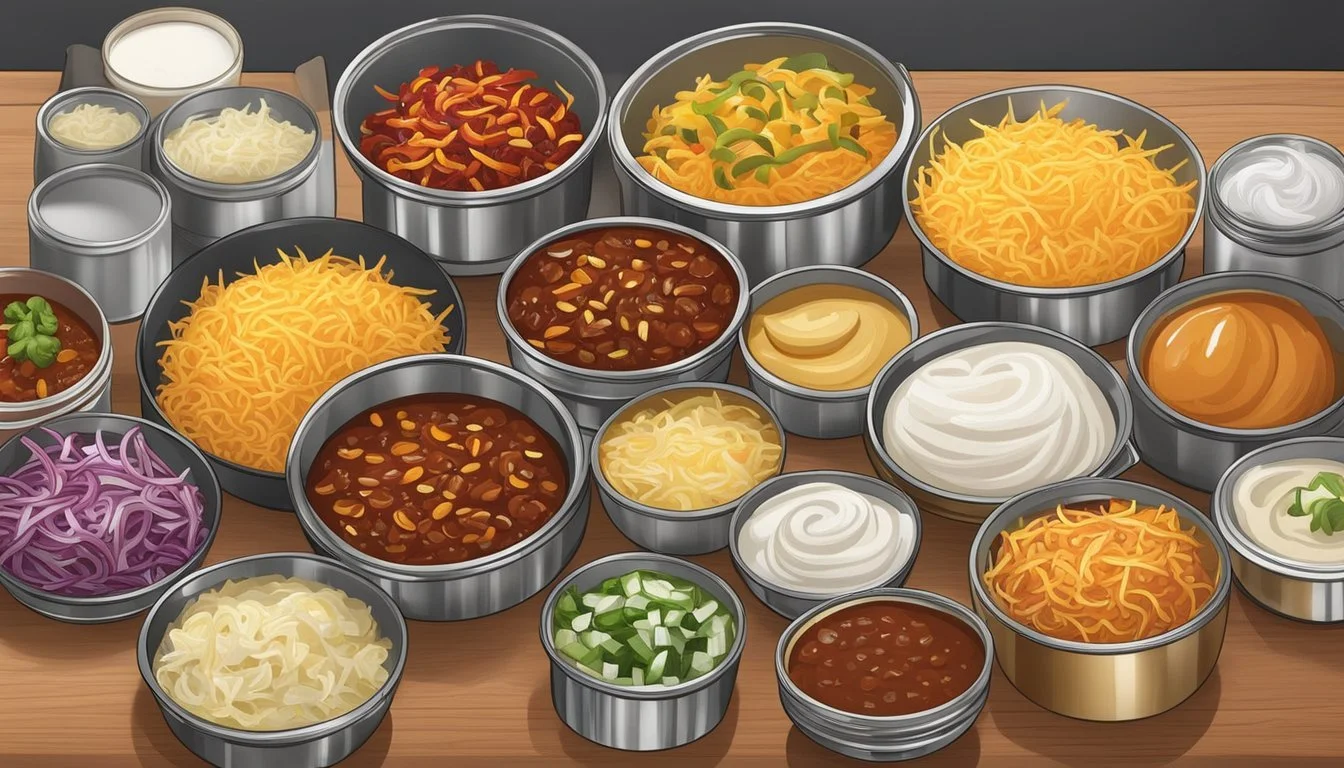Canned Chili Recipes and Toppings
Quick, Delicious Ideas for Hearty Meals
Canned chili serves as a convenient base for a wholesome, home-cooked meal that can be both time-saving and satisfying. By incorporating a variety of pantry ingredients and a touch of creativity, one can enhance the flavors and textures to personalize the dish. While homemade chili is revered for its slow-cooked depth of flavor, the practicality of canned chili cannot be overlooked, especially when time or resources are limited.
Properly selected toppings add not just complementary flavors but also diverse textures to chili. They transform the humble bowl of chili into a customized meal that caters to individual preferences. Traditional accompaniments such as shredded cheese, sour cream, and chopped green onions are commonly used, while creative options like avocado, lime wedges, or a sprinkle of Cotija cheese can elevate the dish to a new level of flavor complexity.
The versatility of chili, whether starting from scratch or from a can, invites experimentation and personalization. One can easily adjust the level of heat, the consistency, and the overall flavor profile by adding ingredients like fresh or canned tomatoes, various types of beans, and an array of spices. The stew's (What wine goes well with stews?) heartiness is a canvas on which home chefs can paint their culinary picture, resulting in a meal that is both comforting and unique to their taste.
Choosing Your Base
When crafting the perfect bowl of canned chili, the selection of the base is paramount. The base will define the chili’s character and set the stage for the addition of spices, toppings, and sides.
Traditional Red Chili is a classic choice, often featuring a tomato-based sauce, red kidney beans, and ground beef. For those inclined towards Homestyle Chili, the focus is on a rich, meaty flavor, typically with a combination of both beef and pork for depth.
Chili Verde stands out with a tangy tomatillo base and usually includes pork, offering a zesty alternative to its red counterpart. Meanwhile, White Chili provides a milder taste, utilizing white beans and chicken or turkey as its primary proteins.
For vegetarians, Vegetarian Chili (What wine goes well with vegetarian chili?) and Veggie Chili are hearty options where beans serve as the staple protein; assorted vegetables and a robust blend of spices create a satisfying meat-free dish. As for those seeking a bean-centric variation, beans are not just a supplement but the star in many recipes, from Chili con Carne focusing on simplicity with meat and chili, to bean-rich chilis using black, pinto, or charro beans.
When preparing your base, consider these options:
Meat: Beef, Pork, Chicken, Turkey
Beans: Kidney, Black, Pinto, White, Charro
Styles: Traditional Red, Homestyle, Chili Verde, White Chili, Vegetarian/Veggie Chili, Chili con Carne
Each base offers a unique flavor profile and texture, catering to different palates and dietary preferences. Remember, the quality of the canned chili base will significantly impact the outcome, so one should opt for high-quality products to ensure a delicious experience.
Selecting the Right Ingredients
Crafting the perfect canned chili hinges on carefully choosing high-quality ingredients. This ensures a flavorful and satisfying dish.
Meat Varieties
The foundation of a hearty chili is the protein. Common choices include:
Ground beef: A classic option providing a robust flavor.
Turkey: A leaner alternative with a lighter taste.
One must ensure the meat is fresh and ideally, choose higher-fat content in beef for more flavor.
Beans and Legumes
Beans add texture and substance to chili. Options include:
Kidney beans: Offer a traditional look and feel.
Cannellini beans: Provide a milder flavor and a creamy texture.
When using canned beans, one should drain and rinse them to remove excess salt and starch.
Vegetables and Add-ins
Essential vegetables and add-ins enhance the chili's complexity:
Onions and garlic: Sautéed until fragrant, these are key aromatics.
Canned tomatoes: Offer convenience and consistency in flavor.
Jalapeños: They introduce a kick of heat.
It is crucial to dice vegetables consistently for even cooking and to adjust the quantity of jalapeños based on desired spice levels.
Perfecting the Chili Flavor
Enhancing the flavor of canned chili requires a thoughtful choice of ingredients and techniques. For a savory depth, consider incorporating soy sauce or Worcestershire sauce. These condiments contain naturally occurring glutamates providing umami, also known as the fifth taste. For those avoiding soy, tamari can be a gluten-free alternative with a similar flavor profile.
To achieve a smokey essence without an open flame, a few drops of liquid smoke may be added. This infuses a campfire-like aroma reminiscent of traditional chili cooked over an open fire.
Canned tomatoes provide a tangy and sweet base, while chili powder and ground cumin add the quintessential chili flavor and warmth. Both these spices should be added to taste, complementing the canned chili's existing seasoning.
Onions and garlic, sautéed until translucent, elevate the complexity of the dish. They introduce a subtle sweetness and pungency, which are fundamental to a grounded chili profile. For those who desire an added kick, cayenne pepper proves to be a potent spice, delivering a clean, sharp heat that intensifies the chili's character.
Ingredient Purpose Suggested Amount Soy sauce Umami enhancement 1-2 tsp Liquid smoke Smokey flavor A few drops Chili powder Warmth, Color To taste Ground cumin Earthiness To taste Onions Sweetness, Aroma 1 medium, diced Garlic Pungency 2 cloves, minced Cayenne pepper Heat Pinch to 1/4 tsp
To tailor the chili to individual preferences, one can adjust the level of salt. Rather than adding table salt directly, sauces like soy sauce or ingredients like tamari act as alternative sources, contributing both flavor and sodium content.
By strategically adding these ingredients and adjusting their amounts, a chef can transform a simple canned chili into a rich, robust, and complex dish. Each additive should be introduced with care, always tasting and adjusting to ensure a balanced result that is sure to satisfy.
Enhancing Texture and Consistency
The texture and consistency of canned chili can be significantly improved by incorporating various ingredients that add both depth and dimension to the dish. One effective method is to include additional beans that complement the existing mixture. Refried beans, for example, can be stirred into the chili to create a thicker, creamier consistency. This not only enriches the texture but also adds a subtle complexity to the flavor profile.
White beans, such as cannellini or navy beans, are another excellent choice. These beans can be mashed and then mixed in to thicken the chili while maintaining a hearty feel. Additionally, the inclusion of corn adds a delightful crunch and sweetness, providing a contrast that can enhance the overall sensory experience of the chili.
Incorporating Textural Elements:
Refried Beans: To achieve a creamier consistency.
White Beans: Mash and mix to thicken while retaining a robust texture.
Corn: Introduces a crunch and sweetness for contrasting texture.
It’s important to be mindful of proportions when enhancing canned chili, as the goal is to improve the dish without overpowering its intrinsic flavors. One should aim for a balance that respects the integrity of the chili while introducing elements that stand out on the palate indirectly. Their confident application will render the chili not just more satisfying to eat but will also leave a lasting impression of culinary craft.
Cooking Techniques
The preparation of canned chili can be greatly enhanced by using the right cooking technique. The Slow Cooker Method allows flavors to meld over time, while the Stovetop Method provides a quicker route to a warm, flavorful meal.
Slow Cooker Method
Ingredients:
1 to 2 cans of chili
Optional: additional ingredients for enhanced flavor (e.g., fresh tomatoes, onions, spices)
One may place the canned chili into a slow cooker and set it on low for 2-3 hours to allow flavors to develop fully. A person might consider sautéing additional vegetables in olive oil before adding them to the pot for a richer taste.
Instructions:
Add the canned chili to the slow cooker.
Optional: Sauté additional ingredients in a separate pan with olive oil, then add to the slow cooker.
Cover and cook on low for 2-3 hours.
Stovetop Method
Ingredients:
1 to 2 cans of chili
Optional: olive oil, extra spices, or vegetables
A cook may heat a large pot over medium heat and pour in the canned chili. If one desires more depth of flavor, they could consider adding a splash of olive oil along with their choice of vegetables and spices at this stage. Stirring occasionally, they should let the chili simmer for about 20 minutes.
Instructions:
Heat a large pot over medium.
Add the canned chili, optional olive oil, and any extra ingredients.
Stir occasionally and allow to simmer for 20 minutes.
Toppings and Garnishes
Enhancing the flavor and texture of canned chili can be achieved by adding a variety of toppings and garnishes. These finishing touches can transform a simple dish into a gourmet experience.
Cheese Varieties
Shredded Cheddar Cheese: A popular choice for its smooth, buttery flavor that melts effortlessly into hot chili.
Monterey Jack: Offers a mild taste and creamy melt, complementing the chili without overpowering it.
Cotija Cheese: Brings a salty, crumbly texture, adding a touch of authenticity to each bite.
Fresh Additions
Cilantro: A sprinkle of chopped cilantro introduces a fresh, citrusy note.
Chopped Green Onions: They provide a mild onion flavor and a crisp, colorful garnish.
Avocado Slices: Adds creamy richness and is a healthy source of fats.
Lime Wedges: A squeeze of lime can brighten the chili with a zesty tang.
Crunchy Elements
Crushed Tortilla Chips: They contribute a corn flavor and a satisfying crunch.
Oregano and Saltine Crackers: Offer a subtle herb twist and a classic texture.
Roasted Pumpkin Seeds: Introduce an unexpected nutty crunch that pairs well with chili's spices.
Accompaniments and Sides
Selecting the right accompaniments and sides can elevate a simple canned chili into a fulfilling meal. This section explores ideal bread options and grains to pair with chili for a variety of textures and flavors.
Breads
Cornbread is a classic companion to chili. Its sweet and tender crumb contrasts well with chili's robust and spicy flavors. For a crunchy twist, tortilla strips add texture and can be seasoned with chili powder to complement the main dish's taste profile. Additionally, oyster crackers are a traditional topping that offer a light, crisp bite without overwhelming the chili.
Cornbread: Slightly sweet, balances spicy chili.
Tortilla strips: Crunchy, can be seasoned for extra flavor.
Oyster crackers: Light and crisp, an unobtrusive topping.
Rice and Grains
Incorporating rice can turn a bowl of chili into a more substantial meal, offering a neutral base that absorbs the flavors. A plate of chili mac incorporates elbow macaroni for a hearty and comforting dish, bringing together the richness of chili with the beloved texture of pasta.
Rice: White or brown rice as a base to soak up chili sauce.
Chili Mac: Add elbow macaroni and cheese for a hearty meal.
Specialty Chili Dishes
Transforming canned chili into specialty dishes allows for quick and satisfying meals, often with a hearty, Tex-Mex twist. Below, explore how to use canned chili to create crowd-pleasing dishes like Chili Queso Dip, Frito Pie, and Chili Cheese Fries.
Chili Queso Dip
To make an irresistible Chili Queso Dip, one simply needs to blend canned chili with beans and velvety processed cheese. Often served with tortilla chips, this dip combines the rich flavors of traditional chili with creamy cheese. Heat the mixture until all ingredients are well combined and smooth, making sure to stir frequently to achieve that perfect dip consistency.
Ingredients:
1 can of chili with beans
16 oz of processed cheese, cubed
Instructions:
In a saucepan over medium heat, combine the chili and cheese cubes.
Stir continuously until the cheese is completely melted and the mixture is hot.
Serve warm with a side of tortilla chips for dunking.
Frito Pie
A Frito Pie involves a serving of Fritos corn chips topped with canned chili and a generous sprinkle of shredded cheese, usually cheddar. Baked briefly to melt the cheese, Frito Pie can be garnished with additional toppings such as green onions or jalapeños for extra zest.
Ingredients:
1 bag of Fritos corn chips
1 can of canned chili with beans
Shredded cheddar cheese
Instructions:
Preheat oven to 350°F (175°C).
Layer Fritos on the bottom of a baking dish, top with the canned chili, and add a layer of shredded cheese.
Bake until the cheese is melted and bubbly, about 10-15 minutes.
Garnish as desired.
Chili Cheese Fries
For Chili Cheese Fries, crispy fries are smothered in warm canned chili with beans and cloaked in melted cheese. This dish combines the comforting nature of fries with the robust taste of chili and is often finished with a dollop of sour cream or a sprinkle of fresh chives.
Ingredients:
Crispy fries
1 can of canned chili with beans
Shredded cheese of choice
Instructions:
Prepare fries according to package instructions until they are golden and crisp.
Warm the canned chili over medium heat.
Place the fries on a serving plate, top with hot chili, and shredded cheese.
Pop under the broiler for a minute if one prefers the cheese extra gooey.
Health and Nutrition Considerations
When selecting a canned chili or crafting a recipe, individuals should prioritize both health and nutrition. A key factor is the cholesterol content; opting for chili with lean meats or plant-based proteins can help maintain lower cholesterol levels.
Calories are another consideration. Those watching their caloric intake might favor canned chilis with wholesome, nutrient-dense ingredients which provide more satiety with fewer calories. The ideal choices typically have a balanced distribution of macronutrients:
Proteins: Essential for repairing tissues and maintaining muscle mass.
Carbs: A primary energy source, favoring complex over simple carbs for sustained energy.
Fats: Necessary for hormone production and nutrient absorption, focusing on unsaturated fats.
Sodium and saturated fat are often high in processed foods. Opting for lower-sodium varieties (under 500mg per serving) can support heart health and blood pressure management. Similarly, chilis with minimal saturated fat can contribute to a healthier diet.
Nutritionally, the best canned chili options offer:
High fiber content for digestive health.
Ample protein supporting muscle health and satiety.
Low sugar levels to avoid unnecessary calorie intake.
For toppings, one should consider integrating elements that not only elevate the flavor but also boost nutritional value. Recommended toppings include:
Avocado: Rich in healthy fats and fiber.
Organic cheese: For added calcium, in moderation.
Cilantro: A herb providing antioxidants with negligible calories.
Each component contributes to a balanced meal, aligning with both taste preferences and dietary needs without compromising on nutrition.
Storage and Reuse of Leftovers
Storing Leftovers: After enjoying a meal, it’s essential to store leftovers properly to ensure safety and maintain quality. Leftover canned chili should be refrigerated promptly in airtight containers. They typically remain safe to consume for 3 to 4 days when properly refrigerated at or below 40°F (4°C).
Table 1: Guidelines for Refrigerating Leftover Canned Chili
State Container Type Refrigeration Duration Unopened Can Original Can Use by expiration date Opened Can Airtight Container 3-4 Days Leftover Dish Airtight Container 3-4 Days
Freezing Leftovers: One can also freeze chili for extended shelf life. Place the chilled chili in freezer-safe bags or containers, label with the date, and freeze. Frozen chili can last for 4 to 6 months. When ready to use, defrost it in the refrigerator overnight before reheating.
Reusing Leftovers: Leftover chili is versatile and can be incorporated into various new dishes. For maximum flavor and food safety, it's advisable to reheat only the amount of chili one plans to use and to ensure it reaches 165°F (74°C) all the way through.
Ideas for reusing leftover chili include:
Topping for baked potatoes
Filling for tacos or burritos
Mix-in for macaroni and cheese
Base for a hearty dip
Reminder: Always use clean utensils when handling leftovers to prevent bacterial contamination. Avoid repeatedly reheating chili as this may reduce its quality and increase the risk of foodborne illness.
Customizing Your Chili
Canned chili provides a convenient base for a quick meal, but with some creativity, one can enhance both its flavor and nutritional value. A simple start is by adding protein; ground turkey is a lean option that can lighten the dish while still offering a satisfying texture.
Incorporating vegetables such as onions and garlic not only boosts the nutritional content but also deepens the chili’s savory profile. Beans are a staple in chili, and adding varieties like black beans can enrich the dish’s consistency and appearance.
For those desiring extra heat, jalapeños are perfect for imparting a spicy kick. Meanwhile, chili powder is essential for achieving that quintessential chili flavor, and one can adjust the amount to their taste.
To personalize canned chili, consider these topping ideas:
Category Toppings Cheese Shredded cheddar, Monterey Jack, crumbled Cotija Fresh Vegetables Diced tomatoes, avocado slices, chopped green onions Crunch Crushed tortilla chips, sliced radishes Creaminess Sour cream, Greek yogurt Zest and Freshness Cilantro, lime wedges
Chili with beans benefits from these versatile toppings, which also improve the homestyle chili experience. The art of customizing chili lies in balancing the richness of the base with the flavors and textures of one's chosen add-ins, resulting in a personalized and enjoyable dish.
Conclusion
Canned chili provides a convenient and versatile option for quick meals. It can be easily enhanced with a variety of toppings, enabling home cooks to customize dishes to their taste preferences. Toppings like shredded cheese, sour cream, and chopped onions are traditional choices that complement the warm flavors of both homemade and canned chili.
Creative Uses of Toppings:
Fresh herbs, such as cilantro, add brightness.
Crushed tortilla chips or rice can provide texture and soak up the chili.
Lime wedges and radish slices offer a crisp contrast.
For those who have homemade chili, incorporating toppings into leftovers can freshen up the dish for subsequent meals. Transformations such as chili-topped baked potatoes or chili mac and cheese merge comfort food with the rich flavors of chili.
Leftover Integration:
Use leftover chili as a hearty enchilada filling.
Blend it into cheese dips for an instant chili queso.
Whether utilizing canned chili as a time-saving measure or creating a homemade batch, the dish remains a crowd-pleaser. Cooks can rely on both the simplicity of canned chili or the customization of homemade recipes to satisfy diverse palates. The adaptability of chili, paired with a range of topping ideas, reinforces its status as a staple for easy, satisfying meals.

